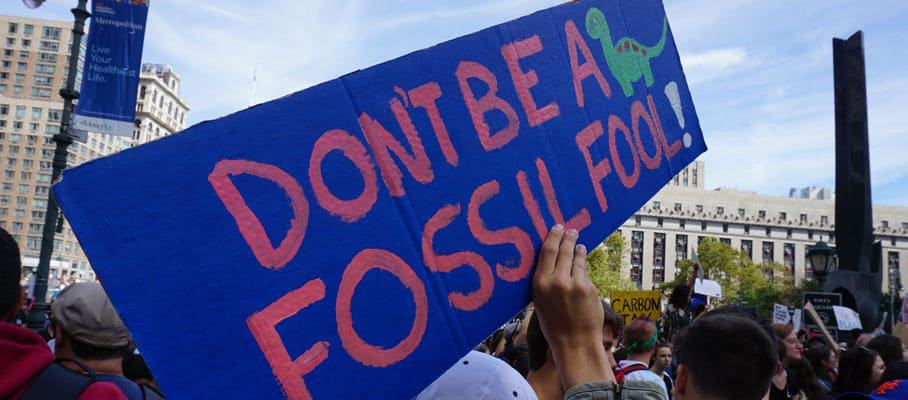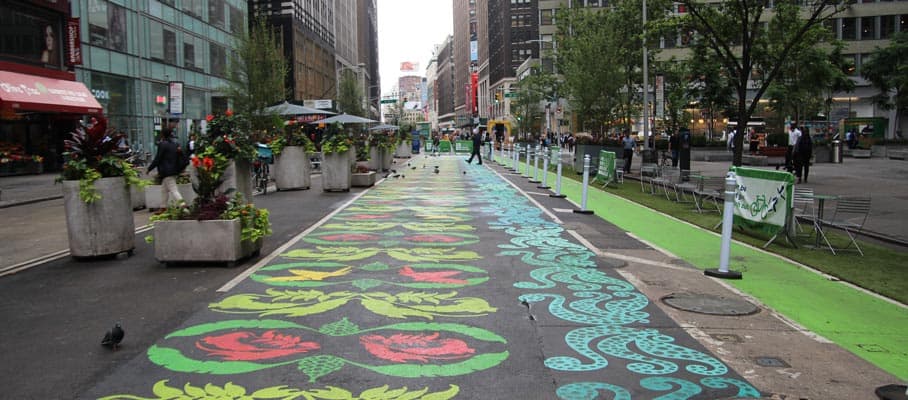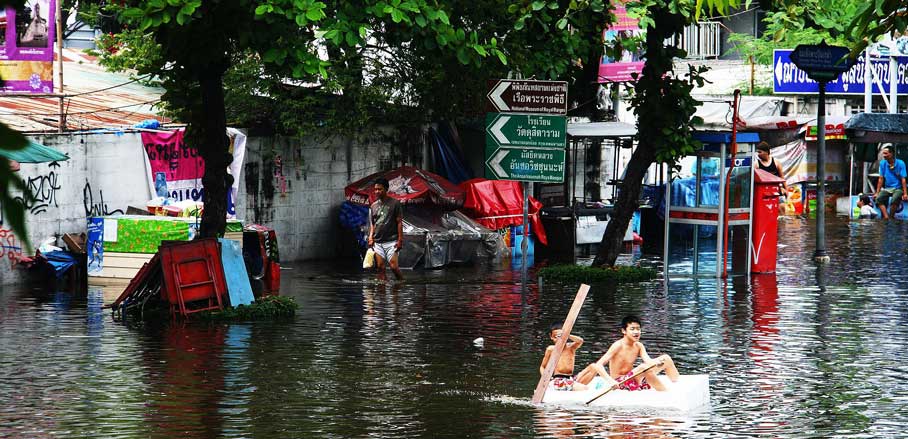Transforming Our Cities for a Better Urban Future: Can We?
Climate change is the biggest challenge our cities are currently facing. Lance Jay Brown on the urgent need to transform them – and on the many ideas on how to do it.
The history of cities goes back easily 10,000 years. Early cities exist on most continents and are recorded and defined by both myth and reality. They exist in a wide variety of climate contexts, from the hot and dry to the cold and wet. Many, if not most, classical older cities still survive. They may go dormant for decades, or even millennia, but then for one reason or another, they resurface, revive.
They may come back as historical tourist attractions like Macchu Picchu in Peru or Pompeii in Italy, or as resuscitated world cities such as London after the Great Fire Of 1666 and more recently London, again, after the Blitz, and Warsaw in Poland and Hiroshima in Japan after World War II. Cities are hard to kill. Ask the Romans. And new cities are built, all around the world. But now, in the post-industrial age, in the 21st century, threats to the survival of cities old or new are, in a host of ways, greater than ever.
What Are the Biggest Threats to Our Cities?
Both in the past and present, wars and conflicts between peoples and nations have decimated our cities, especially since the advent of modern munitions and aerial bombardment. Yet, wars eventually end and we reconstruct, as did Europe, Japan, and elsewhere after the Second World War. All told, a terrible waste of life, resources, and energy.
But now climate change, man being at odds with nature, is a whole new ball game of an entirely different magnitude. As noted in the recent report of the Intergovernmental Panel on Climate Change (IPCC), it is now code red time.
While we are now very aware of the threats, the shocks, the stressors we face, we are also looking at new and creative ways to respond to our current challenges. We seek to mitigate and adapt in ways not previously contemplated. There are the big ideas like E.O. Wilson’s Half-Earth Day and Sir David Attenborough’s numerous compelling messages about the preservation of biodiversity, and the general notion of biomorphic urbanism. The respect for, and value of, nature at large and within the urban context – including urban wilding and agriculture as well as indigenous methods – are all surfacing in response to the unintended and unpredicted consequences of our unbalanced and inequitable way of life over the last 150 years.
What Areas Are in Need of Transformation?
We are confronted by big issues on a daily basis.
Energy, its source and use, is paramount, and the need to reuse and reduce grows more urgent each day. While wind and solar are the most obvious sources of non-polluting energy, they are not without longer-term drawbacks, and nuclear options are back on the table.

© andrew dallows flickr (CC BY-NC-ND 2.0)
Housing for all remains a challenge, and was recently examined by a major International Union of Architects (UIA) conference in Madrid entitled “Affordable Housing Accelerator”.
Urban mobility and urban public space, often entwined, are transforming globally. The new mobility, cultural, and educational transportation hubs of Curitiba’s BRT innovation, to the cable cars connecting Medellin’s informal communities, new means and methods are improving the lives of millions. Claiming, or reclaiming, our urban cores for pedestrian dominance and quality of life is famously evident in Pontevedra, Spain; Masdar City, UAE; Songdo City, Korea; Ghent, Belgium; Oslo, Norway; San Gimignano, Italy, and in other increasingly car-free and/or pedestrianised cities around the world. Just google “car free cities”! This trend, combined with a move towards the use of bicycles and other micro-mobility systems, is measurably reducing our energy consumption, cleaning our air, improving our health, and promoting our sense of well-being and community, thereby transforming our cities for the better urban future.

© New York City Department of Transportation/flickr (CC BY-NC-ND 2.0)
Water, sea level rise, and sinking cities are also part of what we need to address in order to transform as needed. They threaten hundreds of coastal cities around the world including Bangkok, Thailand; New Orleans, Miami, and New York in the USA, Jakarta in Indonesia. In the face of this phenomenon, cities are mitigating, adapting, and even migrating.
Extreme heat is yet another climate condition that asks we transform, and we are. Greening of cities, altering quotidian schedules, and of course, again planning for migration are all potential strategies to be used going forward.
What Do We Need in Order to Transform Our Cities – And Whose Responsibility Is It?
All these changes rely on equitable and diverse social and political action, education, sound leadership, and good science. They rely on good communications and the use of effective data management and tools management. Of difficulty is the fact that some nations are not yet equipped with the knowledge and skills necessary for positive transformation. Some of these nations contributed least to our current challenges, yet they are paying the highest price. They need support. Climate change does not respect political boundaries. We are all in this together, and we must work together to ensure, to guarantee, that no one is left behind.
While some may still question the origin of our current predicament, there is general agreement that the planet will continue to urbanise and increase in population and that it is the role and responsibility of cities to provide and ensure a sustainable and resilient future. This is not to deny the peri-urban or rural, but to recognise all the areas where the solutions need to be applied.
Organisations, agencies, and institutions, global and local, are helping cities in their pursuit of this better future. I am intimately involved with two of these and am aware of, and benefit, from numerous others. The two: the Consortium for Sustainable Urbanization (CSU) and the Habitat Professional Forum (HPF) each have resources to share. The CSU has an ongoing Green Cities series where cities around the world share their positive actions, and the HPF will unveil its Roadmap to a Just and Regenerative Recovery at WUF11 – a tool for all locales to use for the betterment of cities around the world.
Add to these the well-known value of the UN Sustainable Development Goals, the New Urban Agenda, the developing Voluntary Local Reviews, the World Resources Institute, and the World Economic Forum offerings, Theresa Williams’ Rio-based Catalytic Communities, Ann Rubbo’s grassroots Local Project Challenge awardees, and many, many more sources of research and knowledge, and we can see the ground swell of good intent and creativity towards a better life in cities.
There is little time for us to meet the most challenging deadlines, but there is great hope that we can do so. Let’s work together at WUF11 to pursue our better urban future and let’s act, NOW!
- Transforming Our Cities for a Better Urban Future: Can We? - 28. June 2022
